calsfoundation@cals.org
Lavaca (Sebastian County)
| Latitude and Longitude: | 35º20’10″N 094º10’23″W |
| Elevation: | 420 feet |
| Area: | 2.22 square miles (2020 Census) |
| Population: | 2,450 (2020 Census) |
| Incorporation Date: | August 18, 1919 |
Historical Population as per the U.S. Census:
|
1810 |
1820 |
1830 |
1840 |
1850 |
1860 |
1870 |
1880 |
1890 |
1900 |
|
– |
– |
– |
– |
– |
– |
– |
– |
– |
– |
|
1910 |
1920 |
1930 |
1940 |
1950 |
1960 |
1970 |
1980 |
1990 |
2000 |
|
– |
– |
319 |
340 |
373 |
392 |
532 |
1,092 |
1,253 |
1,825 |
|
2010 |
2020 |
|
|
|
|
|
|
|
|
|
2,289 |
2,450 |
|
Located near Arkansas Highways 22 and 96 in Sebastian County, Lavaca can trace its beginnings to the need for a stop for soldiers traveling along the Arkansas River. From its start as a landing in new and undiscovered territory, Lavaca has become a bedroom community of Fort Smith (Sebastian County), the second-largest city in Arkansas.
Louisiana Purchase through Early Statehood
In 1817, Fort Smith became the first U.S. military installation in the Southwest. Soldiers would travel from Little Rock (Pulaski County) to Fort Smith when they could, but shallow water and jutting bedrock halted boat travel at points, forcing them to travel by land.
In 1821, Major Benjamin Moore, a former Virginia resident, and William and Ben Moore Jr. settled at what became known as Moore’s Rock. This location connected the north of present-day Lavaca to Van Buren (Crawford County), directly across the river. Nearly eighteen miles downriver from Fort Smith, Major Moore cut a channel into the bedrock at his place to allow boats to pass. He completed this project at his own expense. This is the first connection to the settlement became Lavaca. Moore is considered the first person to raise cotton and tobacco in that part of the county. He built the first gristmill between Fort Smith and Little Rock.
Because of continued fighting among the Osage and Cherokee, in 1821, the U.S. government ordered the Seventh Infantry to move from Fort Scott, Kansas, and St. Louis Bay, Missouri, to Fort Smith. Under the command of General Mathew Arbuckle, the companies arrived at the post on February 26, 1822.
At the end of his long military service, Arbuckle obtained more than 20,000 acres of land. Part of this grant is a section called Arbuckle Island. The Crawford County Courthouse was nearby. Built in 1822, the courthouse was relocated to Van Buren after a deal was reached to redraw the county lines in 1836. Arbuckle Island and the surrounding area are all part of the present-day city of Lavaca.
Between 1824 and 1827, Congress passed bills authorizing construction of a system of military roads in Arkansas, all of which centered at Fort Smith. War Department planners believed this system of federal highways would not only improve the U.S. defense on the Southwestern frontier but would help the government relocate Indian tribes to just west of Fort Smith. The highway system was called Military Road. This Military Road came directly through the community of Oak Bower and the town of Lavaca. It emerged as wagons traveled along the river to bring soldiers and supplies to Fort Smith.
The land along Military Road, today’s Arkansas 96 and Lavaca’s Main Street, came to be called Military Grove in February 1870 with the establishment of a post office. By the 1880s, Military Grove was known as Oak Bower, so named for the area because of a large growth of established oak trees. Meanwhile, another community settlement was rising just to the west.
Oak Bower was just one mile east of the present site of Lavaca. By 1827, the village was thriving. On the north side of the settlement stood a cotton gin with a hand-carved press screw that operated the box where the bales were pressed and tied down. The nearby Big Creek frequently overflowed and would flood homes and businesses. It was not long until the railroad arrived, roughly following the Military Road route.
Civil War through the Gilded Age
Deciding that the area around Oak Bower was unsuitable, the Arkansas Central Railroad Company opted to build its depot farther west to the location of the present-day town of Lavaca. When the railroad and depot were completed in 1897, there were four daily stops in Oak Bower/Lavaca.
Spanish-speaking railroad workers supposedly referred to the area as “La Vaca,” Spanish for “the cow,” in reference to the fields filled with cattle where the depot was located. It was not long until the names Oak Bower and Lavaca appeared together on land plats and other documents. Locating the depot to the area west of town sounded the death knell for the original Oak Bower.
Men of the area answered the call to service during the Civil War. Young men enlisted for both the North and South. On July 4, 1862, a large rally was held at Big Creek, an area to the north of Lavaca, where dozens of citizens, caught up in a fever of patriotism, signed up and left for immediate service.
James. B. Harwood built a large building and became the first postmaster of Lavaca in 1881. When he registered the post office, he was told an incorporated town in Arkansas already had the name of Oak Bower, so the town was named Lavaca.
Early Twentieth Century through the Modern Era
Just before the beginning of the twentieth century, and soon after, widespread growth hit the town. The population of Lavaca grew quickly, and businesses sprang up to meet the needs of the people. The Lavaca Coronet Band serenaded the community on Saturday nights under the gigantic oak trees. By 1930, Lavaca had five grocery stores, two cotton gins, livery stables, blacksmith shops, a garage, and four saloons. Silent films were shown on the side of the livery stable. When the talking movies came, Lavaca opened its first and only theater.
When the Great Depression was ending and World War II was beginning, Lavaca experienced an economic crisis. Many people had to move to find work in other states, and returning soldiers found few jobs in the area. Local farmers began growing a hybrid of the boysenberry and the raspberry called the Lavacaberry. Dozens of acres of Lavacaberry bushes were planted, and berry sheds sprang up. The success of the Lavacaberry was due to its quick popularity with local customers as well as wholesalers. The berry saved the economy as shipments were sent near and far by rail and truck. Grocers in nearby Fort Smith are blamed for the demise of the berry‘s untimely passing. Other growers dropped prices to compete with local growers until it was no longer worth growing the berries for sale. Slowly, local growers plowed over their berry fields to plant tomatoes and other vegetables. Several residents still have Lavacaberry fields, but nothing as large as it was in their prime.
Instead, many former Lavacaberry fields have been filled with subdivisions, modern houses, and winding streets as Lavaca has changed from its beginning as a settlement on the Arkansas River to become a bedroom community for nearby Fort Smith. The Lavaca Historical Museum, located in the middle of downtown Lavaca, celebrates the past of the community. Located in one of the original four turn-of-the-century brick buildings, the museum houses artifacts from Lavaca, as well as the surrounding areas that have become a part of the town.
Education and Religion
The Lavaca School District is made up of the consolidated school districts of smaller communities, many of which were one-room school houses. From its beginnings in a one-room church, the school now boasts three campuses with nearly 900 students. Ambitious plans to provide a quality education are underway to handle the tremendous growth that the area is currently enjoying.
The Scott-Sebastian Regional Library System, headquartered in Greenwood (Sebastian County), provides public library service to five branches in two counties, including a branch in Lavaca.
The Lavaca Assembly of God, Methodist, and First Baptist churches provide the area with its spiritual guidance as well as preschool programs. In fact, the Baptist church boasts a membership that outnumbers the population of the city. The Reverend Vic Nixon, Methodist minister and 1958 graduate of Lavaca High School, officiated at the marriage ceremony of a young Bill Clinton and Hillary Rodham.
For additional information:
Bearss, Edwin C., and A. M. Gibson. Fort Smith: Little Gibraltar on the Arkansas. Norman: University of Oklahoma Press, 1969.
James, Jack. The History of Lavaca, Arkansas: Military Road, Oak Bower and Beyond. Lavaca, AR: 2007.
The Goodspeed Histories of Sebastian County, Arkansas. Columbia, TN: Woodward & Stinson Publishing Co., 1977.
Jack James
Lavaca, Arkansas
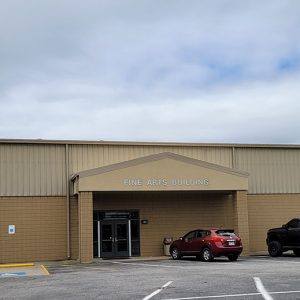 Fine Arts Building
Fine Arts Building 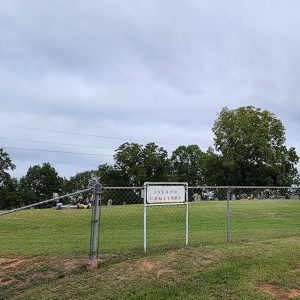 Island Cemetery
Island Cemetery 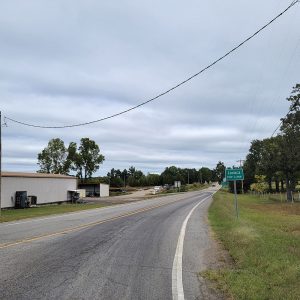 Entering Lavaca
Entering Lavaca 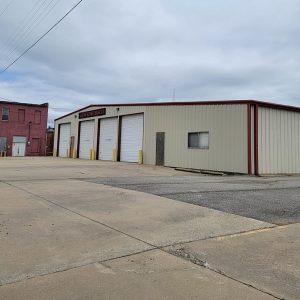 Lavaca Fire Department
Lavaca Fire Department 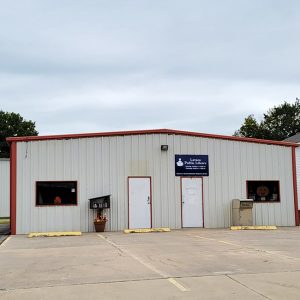 Lavaca Library
Lavaca Library 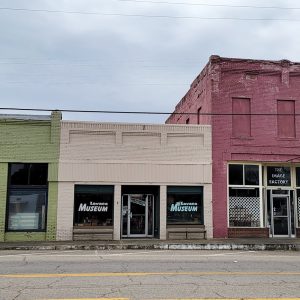 Lavaca Museum
Lavaca Museum 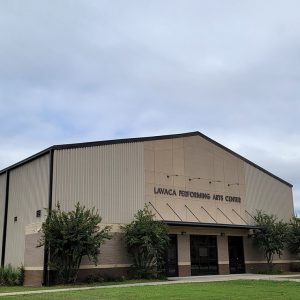 Lavaca Performing Arts Center
Lavaca Performing Arts Center 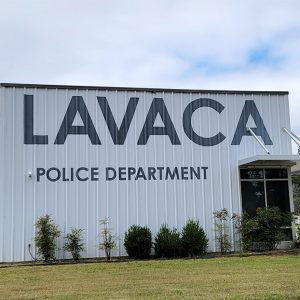 Lavaca Police Department
Lavaca Police Department 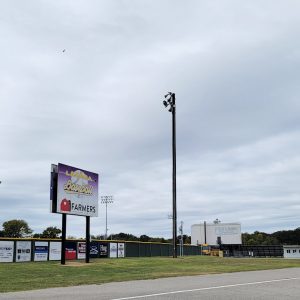 Lavaca Stadium
Lavaca Stadium 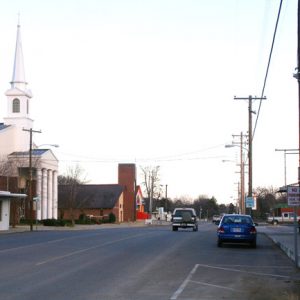 Lavaca Street Scene
Lavaca Street Scene 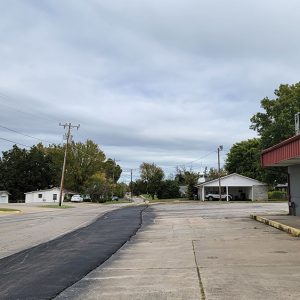 Lavaca Street Scene
Lavaca Street Scene 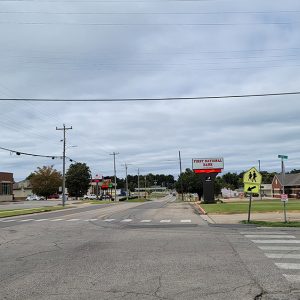 Lavaca Street Scene
Lavaca Street Scene  Lavacaberry Crate Label
Lavacaberry Crate Label 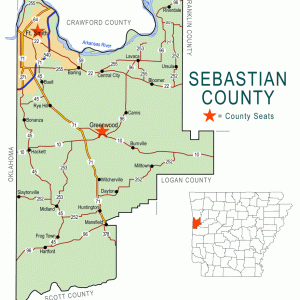 Sebastian County Map
Sebastian County Map 



I have a letter written by a man on July 18, 1867, from Fort Harker, Kansas, telling his wife to go to the express office at Lavaca to pick up a check he was sending her. Appears the name was changed to Lavaca before then.